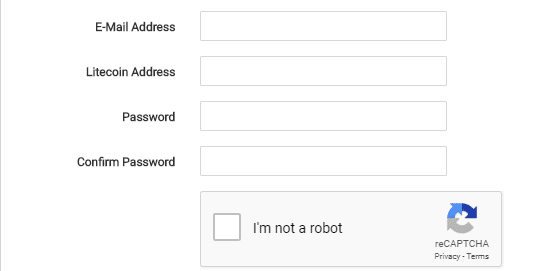Litecoin Faucet Explained
Last Updated: 30th October 2018
Prior to explaining what a Litecoin faucet is, the function that it serves, and why an individual might be interested in operating one, the Litecoin digital currency itself must first be understood.
What is Litecoin
Launched in 2011 by former Google and Coinbase employee, Charlie Lee, Litecoin was created with the intention of being the silver to Bitcoin’s gold. It is an open-source, peer-to-peer digital currency that can be used for instant and near costless transactions. Litecoin is a fork of the Bitcoin protocol, and thus, possesses many similarities.
It has retained its position as a top 10 cryptocurrency by market capitalization for over the past year, with a current market cap of $4.8 billion. It utilizes proof-of-work as its consensus mechanism and uses Scrypt as its hashing algorithm of choice.
With block generation times of 2.5 minutes, compared to Bitcoin’s 10 minutes, it was widely touted as the faster and cheaper cryptocurrency for making payments.
As the Litecoin eco-system continues to grow, Litecoin faucets have become a prominent way for individuals to gain an exposure to the cryptocurrency, without necessarily having to invest in it.
What is a Litecoin Faucet
A cryptocurrency-agnostic definition of faucet is an incentive mechanism, usually in the form of a webpage or app, that rewards a user with small amounts of a cryptocurrency for completing tasks such as a captcha or playing a game.

The first faucet was a website developed by former Bitcoin core developer, Gavin Andresen, which rewarded users with bitcoins that they could then spend.
Faucets were originally designed to educate users who came to the website on the various aspects of the cryptocurrency. For example, with a Litecoin faucet, you may see educational content pertaining to the Litecoin protocol such as the current mining difficulty, the current block reward etc.
How Litecoin Faucets Work
With a Litecoin faucet, as well as any other cryptocurrency faucet, users who successfully complete a task will have the opportunity to claim their reward, which in this case would be a small amount of litecoin. Some faucets will limit the amount of times per day that a user can claim; some faucets limit it to once per hour, or even once per day. All payments are directed to the Litecoin wallet specified by the user.
Furthermore, users can increase the amount of litecoins they claim by entering into affiliate/referrals schemes wherein they can receive more litecoins if they recommend the faucet to a friend.
The amount of litecoins given out by faucets tend to vary according to the current trading price of Litecoin. Because faucets quote the amount that a user can claim in LTC, if the price of LTC were to double from say $5 to $10 for 1 LTC, the faucet would be giving out $10 instead of the promised $5. This, however, is just an example. In reality, Litecoin faucets will give out as little as 0.00000148 LTC for each claim, which is the equivalent of $0.00012 as of writing this article.

Litecoin Faucet Business Model
Initially, the business model of a Litecoin faucet may seem unorthodox; how exactly can they generate a profit when they are giving away money for free? The answer resides in advertising revenue.
Due the prospect of free money, faucet websites tend to attract a large number of visitors, something they can then monetize by displaying adverts. To illustrate, last month in June, the most popular Litecoin Faucet, Moonliteco, attracted over 15 million visitors to its website according to SimilarWeb.
As a result, many faucets actually prevent users from using their service if they detect ad-block software running in their browsers.

Conclusion
To conclude, Litecoin faucets are an incentive mechanism designed to expose new users to the cryptocurrency by rewarding them for completing small tasks.
Even though the amount earned from a Litecoin faucet is small, it allows new users to practise sending and receiving LTC without putting too much at stake.
As an additional resource, FaucetHub.io is a website that users can use in order to find the best faucets with the best payouts for different cryptocurrencies.



